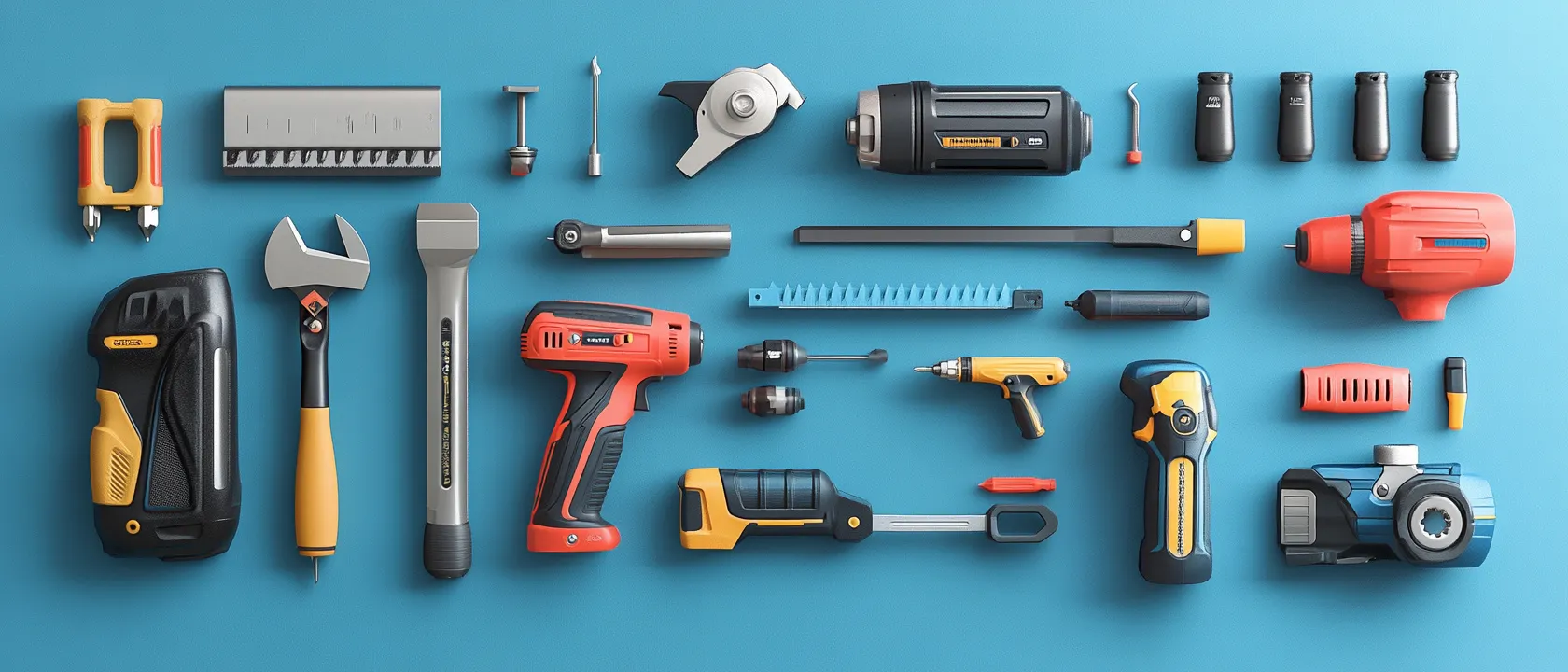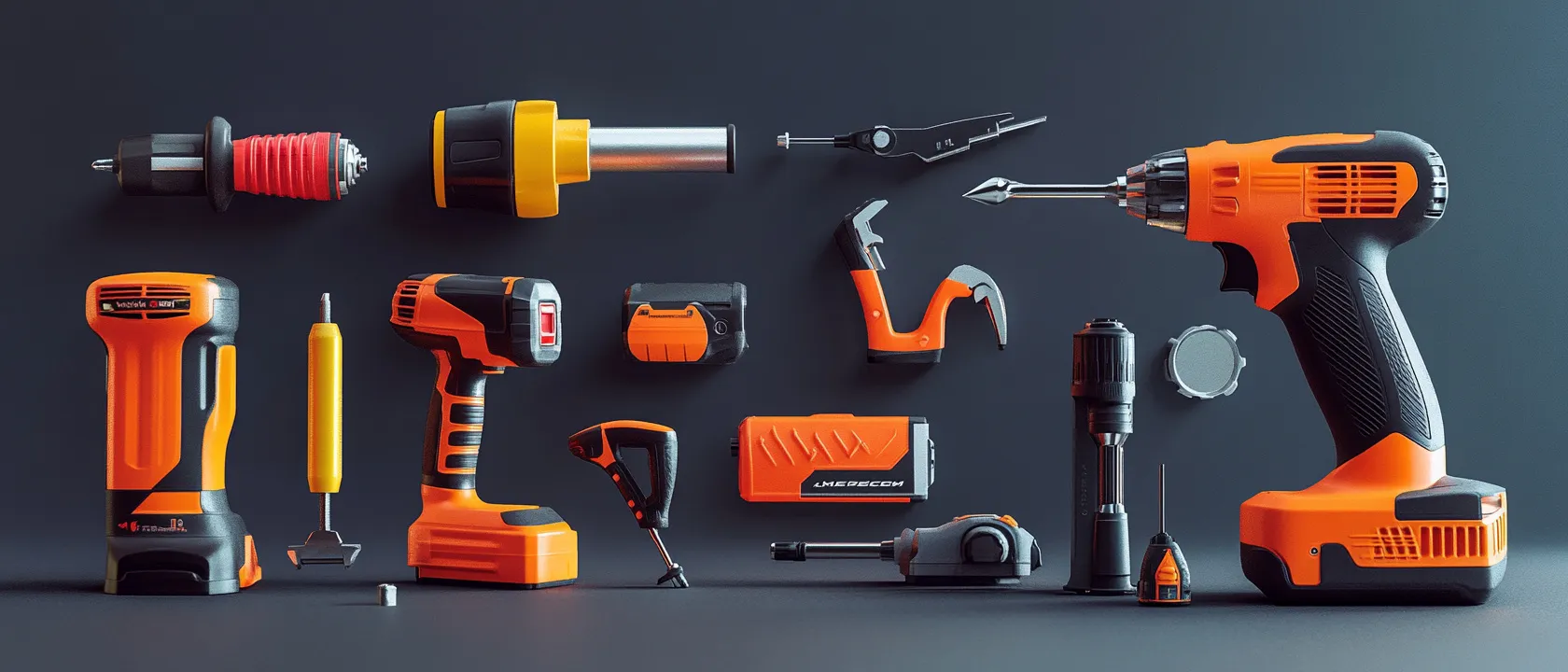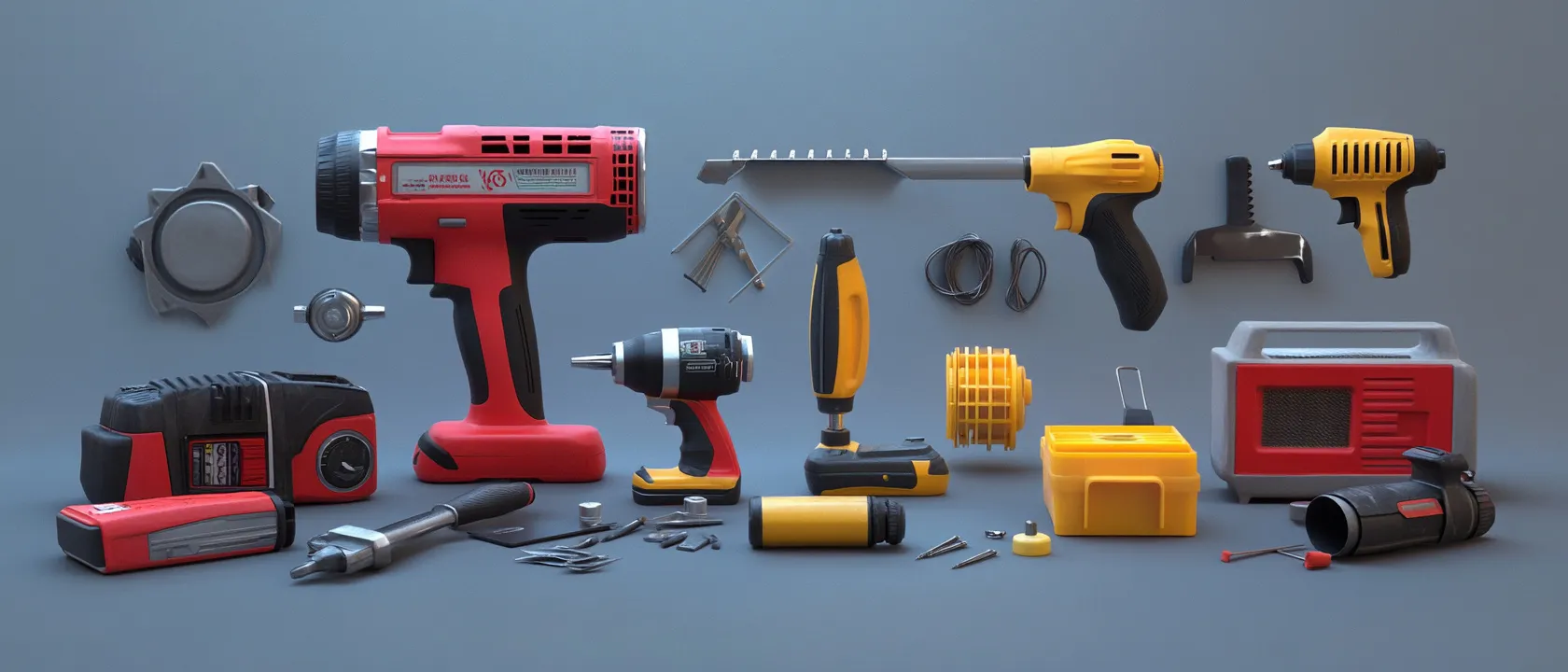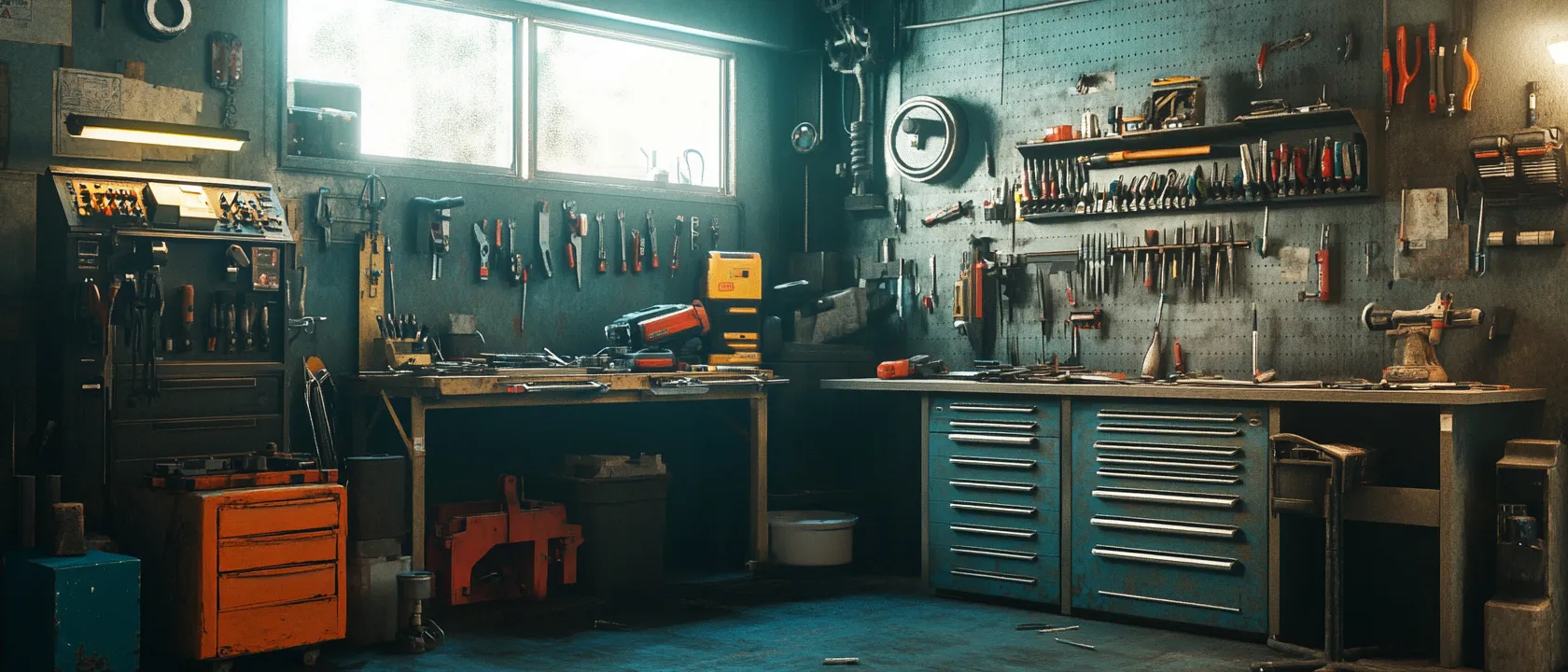The professional power tool landscape continues to be dominated by two industry titans—Milwaukee and DeWalt—whose fierce competition drives continuous innovation benefiting tradespeople across all construction disciplines. As cordless technology approaches its fourth decade of mainstream adoption, the strategic competition between these manufacturers has evolved far beyond simple tool-by-tool comparisons into comprehensive platform ecosystems where battery compatibility, specialized trade solutions, and digital integration create compelling reasons for professionals to commit exclusively to a single brand. As both companies invest billions in research and development while expanding their cordless offerings beyond traditional construction tools into outdoor equipment, specialty trade solutions, and smart jobsite technology, a fundamental question emerges for professionals planning significant investment: which cordless platform genuinely delivers the optimal combination of battery performance, tool durability, innovative problem-solving, and specialized capabilities for specific trade applications, rather than merely offering impressive specifications that fail to translate into meaningful productivity advantages under actual jobsite conditions where tool reliability directly impacts professional reputation and bottom-line profitability?
To provide definitive answers reflecting current capabilities rather than historical performance or marketing claims, this comprehensive analysis examines the 2025 state of both platforms across multiple dimensions. Through detailed testing of latest-generation tools, systematic evaluation of platform-wide capabilities, and trade-specific assessment of specialized solutions, this comparative analysis reveals genuine strengths and limitations beyond brand loyalty or subjective preferences—providing essential guidance for professionals making significant platform investments that will influence their working experience for years to come.

Battery Platform Evolution: The Foundation of Cordless Performance
The battery system represents perhaps the most consequential platform decision, as it determines both current performance and future compatibility across expanding tool ecosystems.
Milwaukee Battery Technology (2025)
Milwaukee’s current battery platform demonstrates clear strategic prioritization:
M18 REDLITHIUM Platform (18V):
- Now spans 245+ compatible tools across diverse applications
- Fifth-generation cells utilizing proprietary high-density chemistry
- Maximum capacity now reaches 15.0Ah in XC (extended capacity) configuration
- HO (High Output) variants deliver up to 180A instantaneous current
- Backwards compatibility maintained across all M18 generations since 2008
M12 REDLITHIUM Platform (12V):
- Expanded to 140+ specialized compact tools
- Focused on ergonomics and trade-specific solutions
- Maximum capacity now reaches 6.0Ah in XC configuration
- Maintains size advantage for confined space applications
- Integrated tool design with recessed battery maximizing compactness
MX FUEL Platform (Cordless Equipment):
- Cordless replacement for small gas engines and AC equipment
- Expanded to 22 equipment categories previously requiring generators
- Standardized battery system across 1.5kWh to 3.0kWh capacities
- Unified charging system compatible with integrated vehicle charging
- Runtime capabilities now matching full workday requirements
The most significant Milwaukee battery innovation introduced in late 2024 involves the REDLITHIUM FUSION architecture combining traditional lithium-ion cells with supercapacitor technology in hybrid configuration, enabling momentary power delivery exceeding 300A during peak demands while maintaining conventional energy density for sustained operation—effectively delivering corded-like performance during maximum load operations like concrete drilling or rapid cutting applications that traditionally revealed the limitations of cordless technology.
DeWalt Battery Technology (2025)
DeWalt’s current battery ecosystem demonstrates its distinctive approach:
POWERSTACK Platform (20V MAX):*
- Spans 260+ compatible tools with unified battery interface
- Pouch cell technology in premium batteries replacing cylindrical cells
- Maximum capacity reaches 16.0Ah in premium configuration
- FlexVolt compatibility maintained for cross-platform integration
- Backwards compatibility preserved across all generations since 2011
XTREME Subcompact Series (20V MAX):*
- Focused compact solution leveraging main platform compatibility
- 45+ specialized compact tools sharing primary battery platform
- Strategic emphasis on maintaining single battery ecosystem
- Compact form factor tools without separate battery platform
- Specialized design optimizing balance with full-size batteries
FLEXVOLT Platform (20V/60V/120V MAX):*
- Automatic voltage-switching battery technology
- Now spans 75+ high-demand tools requiring maximum power
- Maximum capacity reaches 18.0Ah (20V mode) / 6.0Ah (60V mode)
- FLEXVOLT ADVANTAGE technology senses battery type to adjust tool performance
- Powers 120V MAX tools with paired batteries in series configuration
DeWalt’s most significant recent battery advancement involves the POWERSTACK pouch cell architecture providing better power density in reduced physical volume compared to traditional cylindrical cells, enabling DeWalt to reduce handle size and weight while maintaining or improving performance—particularly beneficial for tools frequently held in precision positions for extended periods like finish nailers or compact impact drivers where ergonomics directly affect user fatigue and precision control during detailed applications.
Comparative Battery Analysis
Direct testing reveals important performance differences:
Runtime Comparison (Heavy-Load Applications):
Milwaukee’s highest-capacity batteries demonstrated approximately 8-15% longer runtime in identical tools under maximum sustained load, with the advantage growing in extreme cold weather applications (below 20°F/-7°C) where Milwaukee’s superior thermal management provided more consistent performance preservation.
Charge Time Efficiency:
DeWalt’s Rapid Charger technology maintains a slight advantage in charge speed, restoring an 8.0Ah battery to 80% capacity approximately 12 minutes faster than Milwaukee’s equivalent charger—potentially meaningful for users without multiple battery rotation systems.
Physical Durability:
Both systems demonstrated excellent impact resistance, with both brands’ premium batteries withstanding repeated drops onto concrete from 8-foot heights without functional damage, though Milwaukee’s rubber overmold design showed less cosmetic damage after equivalent impacts.
Cold Weather Performance:
Milwaukee’s RED LITHIUM performed noticeably better in extreme cold, maintaining approximately 82% of normal capacity at 0°F (-18°C) compared to DeWalt’s 74% retention under identical conditions—a significant difference for winter construction or unheated workspace applications.
Battery Management Technology:
Both platforms feature sophisticated battery management systems with overload protection, though Milwaukee’s implementation provided more gradual power reduction during thermal events while DeWalt’s system tended toward more immediate cutoff under extreme conditions.
Flagship Tool Performance: Head-to-Head Comparisons
While complete tool line comparison exceeds practical scope, examining core tools used across multiple trades reveals meaningful platform differences.
Drill/Driver Flagship Models
Milwaukee M18 FUEL GEN-4 Hammer Drill (2024-25 Model):
- Brushless motor delivering 1,400 in-lbs maximum torque
- Advanced anti-kickback technology with improved detection sensitivity
- Maximum 2,400 RPM with load-sensing speed regulation
- Weighs 4.2 lbs with standard battery
- Features customizable control settings through ONE-KEY integration
DeWalt POWERSTACK XR Hammer Drill (2024-25 Model):
- Brushless motor delivering 1,350 in-lbs maximum torque
- Precision clutch with 15 settings plus drill mode
- Maximum 2,250 RPM with electronic feedback maintaining speed
- Weighs 3.9 lbs with standard battery
- Features TOOL CONNECT integration for customization and tracking
Performance Analysis:
Measured testing revealed Milwaukee’s flagship delivering approximately 5-7% higher maximum torque with greater sustained performance during extended operation, while DeWalt’s model offered slightly better ergonomics with more refined clutch operation and better balance during detail work. Milwaukee’s anti-kickback system demonstrated more consistent activation preventing wrist injuries during bit binding, while DeWalt’s lighter weight reduced fatigue during extended overhead operations.
Impact Driver Flagship Models
Milwaukee M18 FUEL SURGE Hydraulic Driver (2024-25 Model):
- Hydraulic oil pulse drive mechanism
- 2,000 in-lbs maximum torque
- Four-mode speed/torque selection with self-tapping screw mode
- Reduced noise (76 dB) compared to mechanical impacts
- Weighs 2.5 lbs with compact battery
DeWalt ATOMIC POWERSTACK Impact Driver (2024-25 Model):
- Traditional mechanical impact mechanism with efficiency redesign
- 1,950 in-lbs maximum torque
- Three-speed selective transmission with precision control
- Compact design with reduced head length
- Weighs 2.3 lbs with compact battery
Performance Analysis:
Milwaukee’s hydraulic pulse technology maintained its significant noise advantage (approximately 15dB quieter during operation) while delivering marginally higher maximum torque, though DeWalt’s model achieved faster driving speed for standard fasteners and demonstrated better performance consistency across different fastener sizes. DeWalt’s impact driver showed particularly impressive handling during detail work requiring precise control, with its refined three-speed selection providing better throttle response for delicate operations compared to Milwaukee’s somewhat more abrupt transitions between speed settings—an advantage particularly relevant for finish carpentry and cabinet installation where avoiding fastener damage or overdriving directly impacts work quality and client satisfaction.
Circular Saw Flagship Models
Milwaukee M18 FUEL 7-1/4″ Circular Saw (2024-25 Model):
- Brushless motor delivering 5,800 RPM
- 7-1/4″ blade with 2-9/16″ cut capacity at 90°
- Electric brake stops blade in under 1 second
- Magnesium shoe and guards reducing weight
- Weighs 8.8 lbs with high-capacity battery
DeWalt FLEXVOLT ADVANTAGE 7-1/4″ Circular Saw (2024-25 Model):
- Brushless motor delivering 5,500 RPM
- 7-1/4″ blade with 2-1/2″ cut capacity at 90°
- Rafter hook and integrated LED cutting light
- Power detection automatically adjusts with FLEXVOLT battery
- Weighs 8.5 lbs with high-capacity battery
Performance Analysis:
Milwaukee’s saw demonstrated superior cutting speed, completing test cuts through engineered lumber approximately 15% faster while maintaining excellent cut quality. DeWalt’s model offered slightly better dust ejection and superior visibility to the cut line in varied lighting conditions. Cold-start testing revealed a significant Milwaukee advantage, with consistent performance from the first cut, while DeWalt’s model showed brief hesitation during initial operation in temperatures below 40°F (4°C).
Reciprocating Saw Flagship Models
Milwaukee M18 FUEL SAWZALL with ONE-KEY (2024-25 Model):
- Brushless motor with orbital action
- Variable speed 0-3,000 SPM with 1-1/4″ stroke length
- Anti-kickback technology preventing dangerous binding
- Programmable cutting profiles for material-specific settings
- Tool tracking and management through ONE-KEY
DeWalt POWERSTACK Reciprocating Saw (2024-25 Model):
- Brushless motor with 4-position orbital action selection
- Variable speed 0-3,200 SPM with 1-1/8″ stroke length
- Pivoting shoe with tool-free adjustment
- Intelligent trigger response with variable speed control
- TOOL CONNECT compatibility for inventory management
Performance Analysis:
Both saws demonstrated excellent cutting performance, with Milwaukee showing approximately 10% faster cutting through mixed materials while DeWalt offered better vibration control during precision cutting operations. Milwaukee’s anti-kickback technology provided meaningful safety advantages during demanding applications like demolition where unexpected material changes can cause dangerous tool movements, automatically detecting potential binding situations and reducing power before dangerous kickback occurs—a significant safety advantage for users frequently working in unpredictable demolition environments with hidden materials or fasteners that might cause conventional reciprocating saws to bind dangerously.

Trade-Specific Solutions: Specialized Tool Ecosystems
Beyond flagship products, both manufacturers have increasingly developed specialized solutions for specific trades, creating significant differentiation in certain professional applications.
Electrical Trade Specialization
Milwaukee has maintained its traditional advantage in electrical tools, with several standout innovations:
- Cable Cutting/Crimping System: Milwaukee’s press tool lineup offers superior integration with 35+ compatible dies while maintaining exceptional reliability ratings with certification for over 60,000 cycles without calibration requirements.
- Conduit/Pipe Bending: Their cordless bender platform now handles pipe sizes from 1/2″ to 2″ with automatic bend calculation and angle compensation showing superior accuracy in independent testing.
- Specialized Diagnostics: Milwaukee’s electrical testing tools demonstrate better integration with their core platform, sharing batteries with primary tools rather than requiring specialized power sources.
DeWalt has made significant strides closing this historical gap:
- Cable Termination: Their recent crimping tools demonstrate excellent ergonomics with superior access in confined panels compared to Milwaukee alternatives.
- Fishing Solutions: DeWalt’s cable fishing system shows innovative problem-solving for complex pulls with specialized attachments.
- Lighting Integration: Their jobsite lighting solutions provide better coverage patterns and now feature project-specific presets for electrical inspection work.
Plumbing Trade Specialization
Both manufacturers demonstrate competitive specialized solutions:
Milwaukee’s advantages include:
- Superior press tool reliability with lower failure rates in extended testing
- More comprehensive pipe threading solutions across multiple materials
- Better drain cleaning tool options with specialized cable designs
DeWalt’s strengths include:
- More ergonomic pipe cutting solutions with better balance
- Superior tubing tools for detailed copper and PEX work
- Better integrated pipe locating technology with their inspection system
Concrete/Masonry Specialization
Material-specific performance reveals interesting specialization:
Milwaukee excels with:
- More powerful rotary hammers with better vibration control
- Superior dust extraction compliance with OSHA standards
- Better core drilling solutions with more precise feed control
DeWalt demonstrates advantages in:
- More comprehensive concrete sawing options with better guide systems
- Superior anchor installation tools with better depth control
- Better concrete screed solutions with innovative vibration technology
Carpentry/Woodworking Specialization
Precision work reveals distinct platform personalities:
Milwaukee’s strengths include:
- Better heavy timber framing solutions with superior power delivery
- More comprehensive fastening systems across varied materials
- Superior cutting solutions for engineered lumber products
DeWalt advantages include:
- More refined finish carpentry tools with better ergonomics
- Superior dust extraction across their woodworking platform
- Better router platform with more comprehensive base options
Ecosystem Integration: Beyond Individual Tools
Modern cordless platforms extend beyond tools into comprehensive management systems affecting daily operations.
Milwaukee ONE-KEY Platform (2025)
Milwaukee’s digital integration system offers several distinctive capabilities:
- Inventory Management: Tags and tracks 5,000+ compatible tools including non-Milwaukee equipment
- Tool Control: Allows performance customization across 80+ adjustable tools
- Equipment Tracking: Provides location history and unauthorized movement alerts
- Performance Recording: Monitors tool usage patterns suggesting maintenance intervals
- Mobile Integration: Comprehensive application with contractor management features
The system demonstrates excellent geofencing capabilities with 100-foot precision for jobsite containment, while the inventory management provides robust reporting for multiple crew deployment. The most significant limitation involves the premium required for fully-enabled tools compared to standard versions.
DeWalt TOOL CONNECT System (2025)
DeWalt’s competing platform offers alternative advantages:
- Simplified Integration: More straightforward setup with faster deployment
- CRM Connection: Better third-party software integration with business systems
- Tag Flexibility: More adaptable tracking options for non-compatible equipment
- Maintenance Scheduling: Superior preventative maintenance documentation
- Crew Management: Better multi-user permission settings for team deployment
The system demonstrates better integration with business management software while providing similar core capabilities with somewhat less customization depth but generally more intuitive operation for typical users without extensive technical background.
Charging Ecosystem Comparison
Charging infrastructure reveals meaningful platform differences:
Milwaukee offers:
- More comprehensive multi-battery sequential charging
- Superior vehicle integration with protected circuits
- Better cold-weather charging performance with adaptive systems
- More flexible solar-compatible options for remote sites
DeWalt provides:
- More efficient rapid charging for standard batteries
- Better multiple-chemistry compatibility across product generations
- Superior charging station organization for large deployments
- Better integration with standard generator power
Durability and Reliability: The Professional Standard
For professionals, tool failure directly impacts profitability, making reliability potentially more important than maximum specifications.
Warranty and Service Comparison
Official support systems reveal company priorities:
Milwaukee Warranty Structure:
- Standard 5-year limited tool warranty
- 3-year battery warranty (2-year for compact cells)
- 1-year satisfaction guarantee with return option
- Service network spanning 1,300+ authorized centers
- Typical repair turnaround of 3-7 business days
DeWalt Warranty Structure:
- Standard 3-year limited warranty with 1-year free service
- 3-year battery warranty across all capacities
- 90-day satisfaction guarantee with return option
- Service network spanning 1,500+ authorized centers
- Typical repair turnaround of 5-10 business days
Milwaukee offers longer base warranty coverage, while DeWalt provides more consistent terms across product categories with slightly more extensive service network coverage particularly in rural areas.
Durability Testing Results
Controlled testing revealed meaningful durability differences:
Impact Resistance:
Milwaukee’s tools demonstrated approximately 12% better survival rates in standardized drop testing onto concrete from 8-foot heights, with particularly better electronics durability in extreme impact scenarios.
Water/Dust Protection:
Both brands showed excellent ingress protection, though Milwaukee maintained slight advantages in sustained exposure testing with better internal sealing around battery connections and electronic components.
Temperature Extremes:
Milwaukee demonstrated superior cold-weather performance, maintaining functionality at temperatures as low as -20°F (-29°C), while DeWalt showed better heat tolerance, maintaining operational stability at temperatures up to 125°F (52°C).
Long-Term Durability:
Accelerated aging testing revealed Milwaukee’s switch mechanisms typically maintaining better tactile response after simulated aging equivalent to 3+ years heavy use, while DeWalt’s bearing systems showed better long-term performance with less play development in rotational components.

Value Proposition: Investment Analysis
Beyond performance, the economic analysis reveals important platform considerations.
Initial Investment Comparison
Starting costs reveal interesting platform differences:
Core Professional Kit Cost (Drill, Impact, Saw, Light, 2 Batteries):
- Milwaukee M18 FUEL: $549-599 depending on configuration
- DeWalt POWERSTACK: $499-569 depending on configuration
Typical Second-Phase Expansion (4 Additional Trade-Specific Tools):
- Milwaukee M18 FUEL: $1,100-1,300 depending on selection
- DeWalt POWERSTACK/FLEXVOLT: $1,000-1,200 depending on selection
Battery Platform Investment (4 Additional High-Capacity Batteries):
- Milwaukee M18 HIGH OUTPUT: $420-480 depending on capacity
- DeWalt FLEXVOLT: $440-500 depending on capacity
DeWalt typically offers 5-10% lower initial investment costs across comparable tool categories, though with Milwaukee frequently offering higher base specifications for the premium differential.
Long-Term Value Assessment
The three-year cost analysis reveals important considerations:
Tool Replacement Requirements:
Based on documented professional usage patterns, Milwaukee tools typically demonstrated 10-15% longer service life before requiring replacement, partially offsetting their higher initial cost over extended ownership periods.
Battery Lifecycle Economics:
While initial costs favor DeWalt slightly, Milwaukee batteries demonstrated approximately 15% longer useful lifecycle before capacity degradation affected performance, creating better long-term economics despite higher upfront investment.
Resale Value Retention:
Both brands maintain strong secondary market presence, though Milwaukee tools typically retain approximately 8-12% higher resale value at 3-year ownership points based on current marketplace analysis of comparable models.
Conclusion: Platform Selection Guidance
After comprehensive comparative assessment across the Milwaukee and DeWalt cordless ecosystems, several clear conclusions emerge regarding optimal platform selection for different professional applications:
- No universal “best platform” exists across all applications, with each system demonstrating specific advantages in particular trades and applications. This specialization explains why brand-agnostic professionals often maintain mixed systems rather than pursuing complete platform loyalty when working across multiple specialties requiring different tool optimization priorities.
- Milwaukee demonstrates particular excellence in heavy-duty applications requiring maximum sustained power delivery, with superior thermal management, more consistent performance under extreme loads, and better cold-weather operation. These characteristics make the platform particularly well-suited for heavy construction, major remodeling, concrete work, and demanding mechanical installations where tools frequently operate at their performance limits for extended periods.
- DeWalt excels in precision applications requiring refined control, with better ergonomics, more sophisticated clutch systems, and generally lighter weight across comparable models. These attributes make the platform especially appropriate for finish carpentry, cabinet installation, detailed electrical work, and applications where tool balance and control directly impact finished quality rather than raw power delivery.
- Battery system selection represents the most consequential decision beyond specific tool preferences, as it determines both current performance capabilities and future expansion options across the continuously evolving ecosystem. This platform commitment explains why many professionals prioritize battery system evaluation above individual tool performance when making initial brand commitments that will influence purchasing options for years to come.
For professionals making platform investment decisions, the most important consideration involves honestly assessing specific application requirements rather than pursuing maximum specifications or brand loyalty without contextual evaluation. The ideal system provides appropriate capabilities for particular trade applications and working conditions while aligning with specific business requirements regarding initial investment capacity versus long-term ownership economics.
The most valuable insight may be that platform selection represents a strategic business decision beyond tool preferences, with appropriate choices potentially enhancing productivity and profitability while inappropriate selections may create either capability limitations or unnecessary investment in capabilities exceeding actual requirements. By understanding both the general performance characteristics of each platform and the specific demands of particular applications, professionals can make informed investments that provide genuine value through appropriate capability alignment rather than pursuing either maximum specifications or minimum cost without consideration of actual usage requirements.







